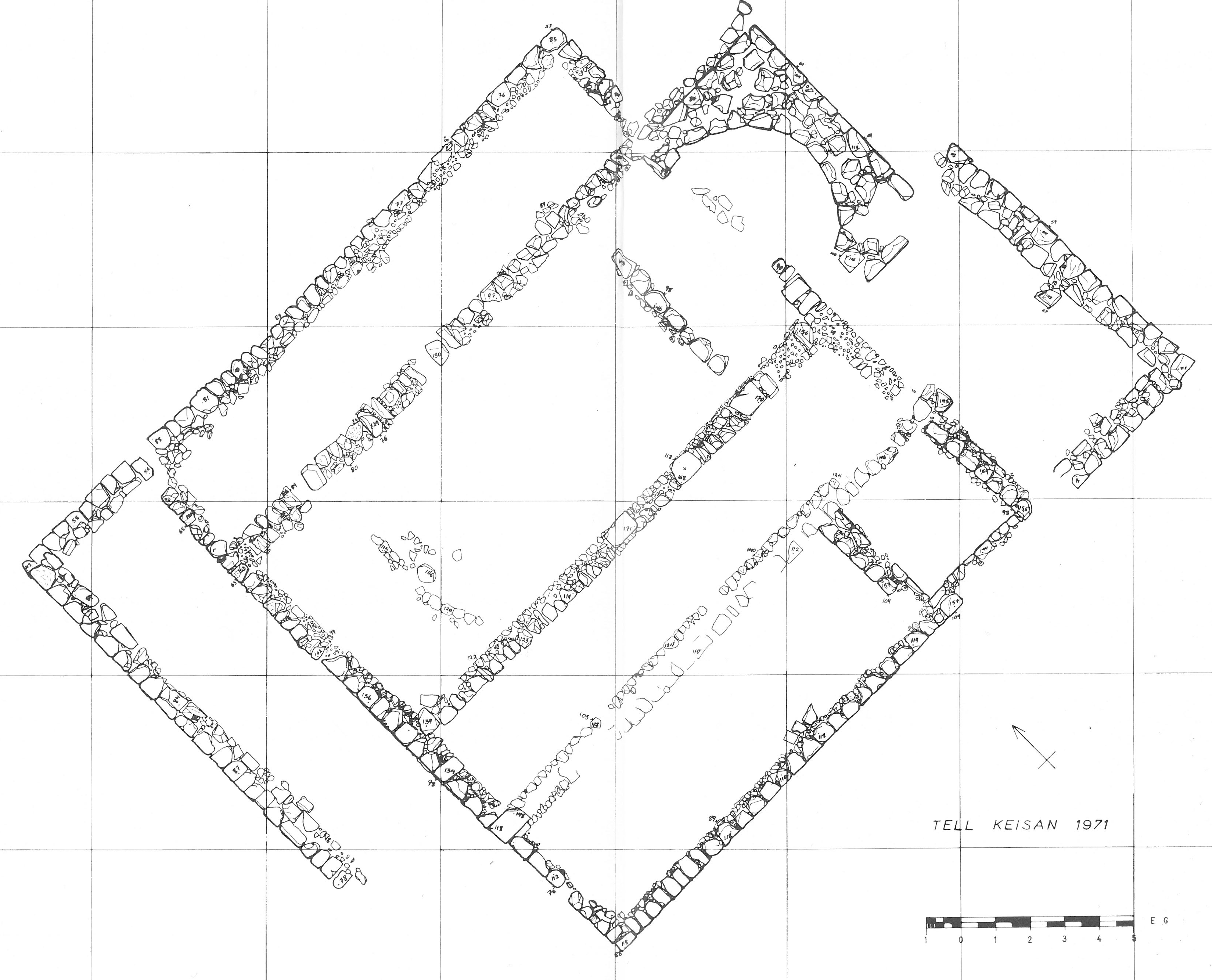Dating centers on a single Byzantien coin:
Father André Lemaire proposes here an identification with a Porphyreon that the proximity to the Nahal Halazon would invite to locate at Tell Keisan. In this hypothesis, a coin of Justin II found near the apse would perhaps give an idea of the date on which the building would have been built. The coin is bronze with the effigy of Justin and Sophie and inscribed ANNO XI = 575 /76. [Cf. W. Wroth, Catalog of the Imperial Byzantine Coins in the British Museum, vol. I (London, 1908), p. 83, no. 99, and pl. XI, 12. This coin could well be the only Byzantine coin out of 21 that been picked up this year.
For his part, Father Bagatti formulated a fairly different perspective.
Claudian was, according to Rufus, Abbot of a monastery located in a village near Acco. Bagatti compares the church of Tell Keisan with an abbey church recently excavated by him at Qasr el-Abd. The village [at Tell Keisan] could, he thinks, to be on the western tell, while the monastery rose a little away on the eastern plateau. The monastery could be in the outbuildings to the south of the apse, or even to the south-west of the narthex where vestiges of walls still remain on the surface. The currency of Justin II could well, in the hypothesis of Fr. Bagatti, date the destruction of the church, for Justin resumed in 572 the persecution against the monophysites.
The study of the Byzantine pottery found here is not yet sufficiently advanced to allow John Landgraf, who undertook it in detail, to pronounce with confidence, but at least the idea of an usage of a fairly short duration towards the end of the sixth century would not contradict his observations.
Translated from:
Jean Prignaud, “Première campagne de fouilles à Tell Keisan (Israël),” Revue biblique, no. 79 (1972): 236.
The Byzantine complex is better known today. It is a church that had two distinct phases, marked by two superimposed chancels. A older chancel, discovered this year, limited to the extremities of the apse, seems to be of the most primitive type known. The one on the published plan moved to front (west), blocking the entire width of the nave and is much higher than the first. It may testify to changes in the liturgy in the time of Justin II (565-578).
The annex buildings representing two successive additions cannot form a monastery.
Translated from Jacques Briend, “Tel Kison,” Israel Exploration Journal 25 (1975): 259.
